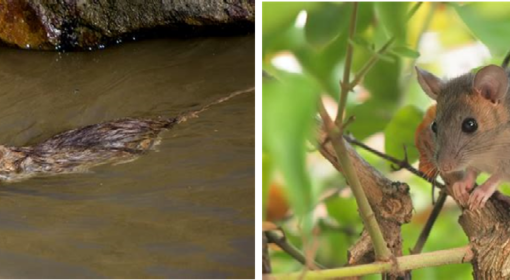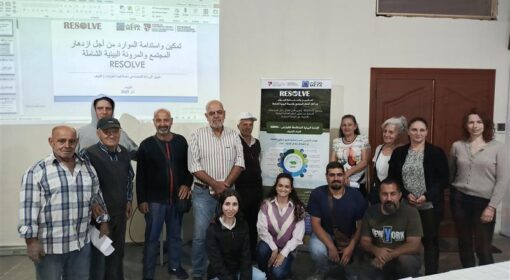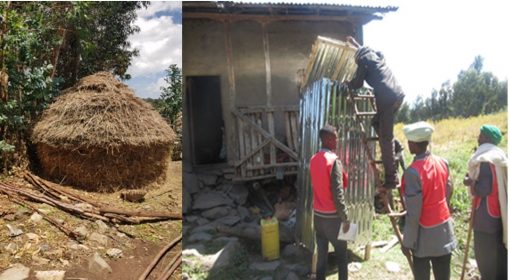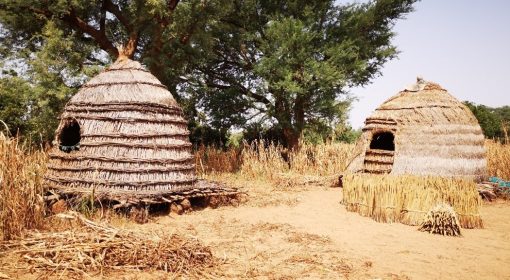by Shadi El Indary, Farah Kamaleddine, Luwieke Bosma, Zeina Mahmoud, Emiliano Moussa
Farming in Lebanon, similarly to wide areas of the Mediterranean basin, has always been shaped by the land itself. In the steep, mountainous regions, terraces were carved into hillsides centuries ago to make cultivation possible. These terraces are still in use today, supporting a unique and resilient form of agriculture known as polyculture, considered the backbone of agriculture in mountainous parts of Lebanon, and providing vital ecosystem services (soil stabilization, water infiltration, etc.).

Polyculture is the practice of growing multiple crops in the same space, either at the same time or in seasonal succession. In a typical Lebanese terrace, you might find fruit trees providing shade over vegetables, with grapevines or beans taking advantage of these trees as their trellis. Once a crop is harvested, another is planted, ensuring the soil is always active and productive. Such a low-input rotational cropping system keeps natural cycles balanced, ensuring complementarity and optimal use of resources (For example, lima beans provide nitrogen for the trees and surrounding crops. They also make use of the tree branches as their trellis, and both provide shade to on-ground summer veggies reducing water consumption…). This system has many benefits: optimal use of limited agricultural soils, reduced erosion, and enhanced biodiversity. However, this also creates year-round food for rodents, who easily adapt to the changing crops and habitats; additionally, the walls of such terraces provide a perfect habitat for rodents with endless crevices between the stone bunds. This complexity makes rodent control in polyculture agricultural systems highly challenging, as there’s no clear “off-season” when fields are empty or unattractive to pests. Understanding this traditional farming system helps us design better solutions, ones that respect the land’s history while addressing today’s rodent-related challenges.
To address these issues, the Ecologically-Based Rodent Management (EBRM) was introduced under the RESOLVE project, a project led by the Environmental Sustainability and Development Unit (ESDU) at the American University of Beirut (AUB) in partnership with MetaMeta Research. The RESOLVE project aims to strengthen food security in Lebanon through regenerative agricultural practices, with rodent management being one critical area of intervention. The EBRM activity, coordinated and implemented by MetaMeta, with the support of the local Ecologist, Shadi El Indary (shadi_indary@yahoo.com), is a regenerative and sustainable approach that focuses on understanding rodent behavior and reducing their access to food, water, and shelter.
After fulfilling an in-depth household survey across 23 villages in the Shouf district (Lebanon), the project team selected two highly affected villages (Wadi Bnahleh and Bater), with lima beans as their main summer crop. The first village (Wadi Bnahleh) is consisted of very narrow typical Mediterranean terraces with an intense polyculture system hosting a mix of lima Beans, plum trees, avocado trees and others. While the second village (Bater), includes both the above-described terraces with a polyculture system, and a semi-intensive agricultural practice along the alluvial plains of Al-Awali River cultivated almost strictly with lima beans and bitter pumpkin (gourd) in a monoculture system.
Subsequently, two Focus Group Discussions were held introducing locals to the EBRM concept and discussing the pilot phase-related activities. These FGD sessions were incredibly valuable where farmers shared their experiences, concerns, and traditional knowledge about rodent behavior, crop damage, and control efforts. Many voiced frustrations over repeated crop losses, especially in lima beans, a crop important for both food and income. From these discussions, a few clear points emerged:
- Farmers are willing to try new, more effective methods, as long as they’re affordable and safe.
- Community-wide action is needed. Rodents don’t recognize farm borders, so isolated efforts won’t be enough.
- The polyculture system — while good for sustainability — makes rodent control more complex, since different crops attract rodents at different times of the year.
Two Communities of Practice (CoP) were established, one in each village, signifying the approval and commitment of farmers in these CoPs to participate in the EBRM pilots. With this knowledge, we worked together to design a set of pilot interventions and a suitable tool kit for active control of rodents. These include improved trapping strategies, proper field hygiene, community coordination, and safe storage methods. The goal is to reduce crop damage with minimal harm to other animals or the environment. The designed kit distributed to farmers consist of the following items:
- Snap traps for rats (15cm x 10cm)
- Snap traps for mice (10cm x 10cm)
- Box (cage) traps
- Pitfall traps
- Gypsum powder
- Bait stations
The implementation of the Linear Trap Barrier System (LTBS) was limited to Bater alluvial plains due to the land morphology in the selected villages that does not allow implementation of the LTBS along narrow terraces. Different traps and techniques were shared as rodents behave in different ways, which is why tailored solutions are key.
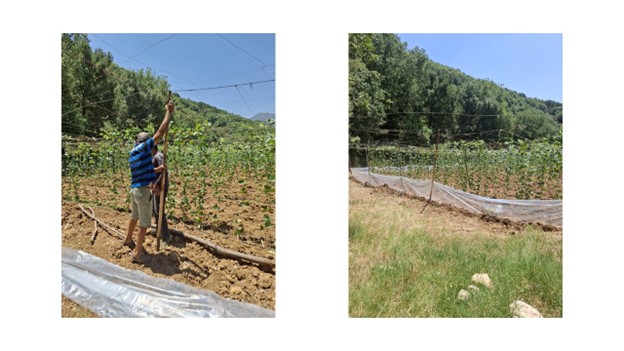
The above selected kit was distributed to 45 farmers by the end of June 2025, and farmers were introduced on handling the items, deployment, optimal baits, and safety measures. During the training, the project team introduced the pitfall trap techniques using upcycled material (water plastic containers, jerry cans etc.).

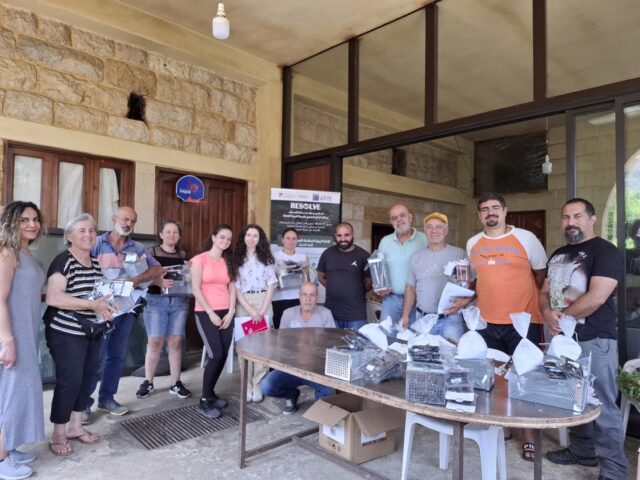
By early July 2025, traps were deployed with farmers in each CoP. Communication and follow-up were carried out either through direct visits or via WhatsApp groups. The main challenge was to convince farmers that the bait must be checked regularly, otherwise results will be mediocre. Therefore, the team provided them with needed peanut butter and kept close coordination with the farmers coupled with field visits.
The provided kit and the LTBS technique showed interesting results catching a wide variety of rodent species in satisfying numbers (Figure 1). The main challenge was the daily commitment for certain farmers to check the traps and add new bait.
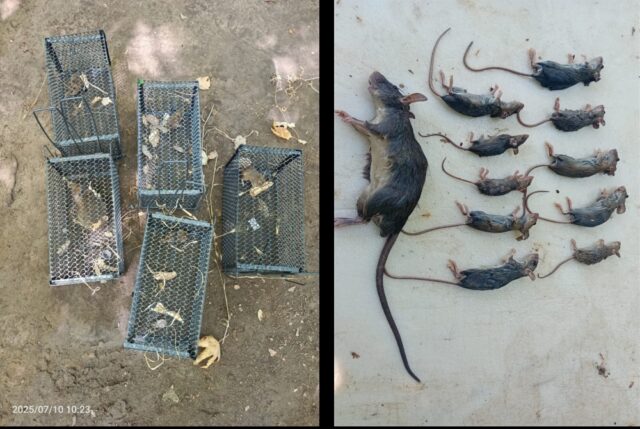
Along the team visits, the growth of the lima bean pods was monitored and rodent damage started showing in the last visit on July 10th 2025 in Bater in certain plots. Future steps will encompass an in-depth monitoring of damage and a comparative approach will be applied between the control clusters with the ones where active trapping of rodents is ongoing (Figure 2).
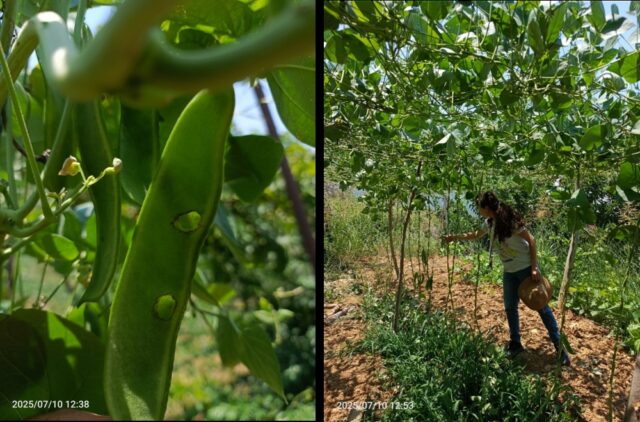
This is just the beginning. As we continue learning from both the land and the people who work it, we hope to develop rodent management strategies that are practical, respectful of nature, and rooted in local knowledge.
Stay tuned for updates as we move into the pilot phase — and thank you to the farmers of Bater and Wadi Bnahleh for leading the way in this effort.
